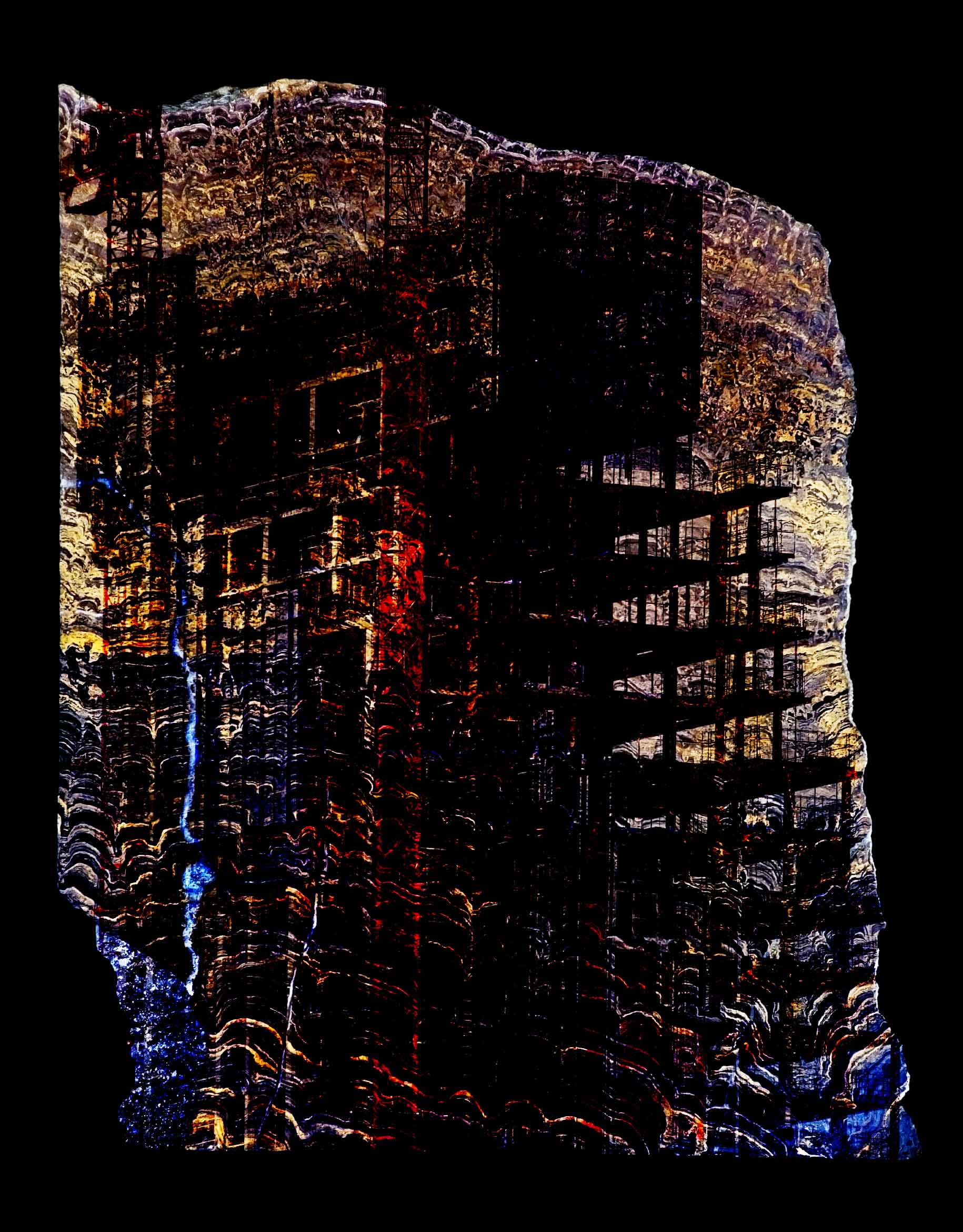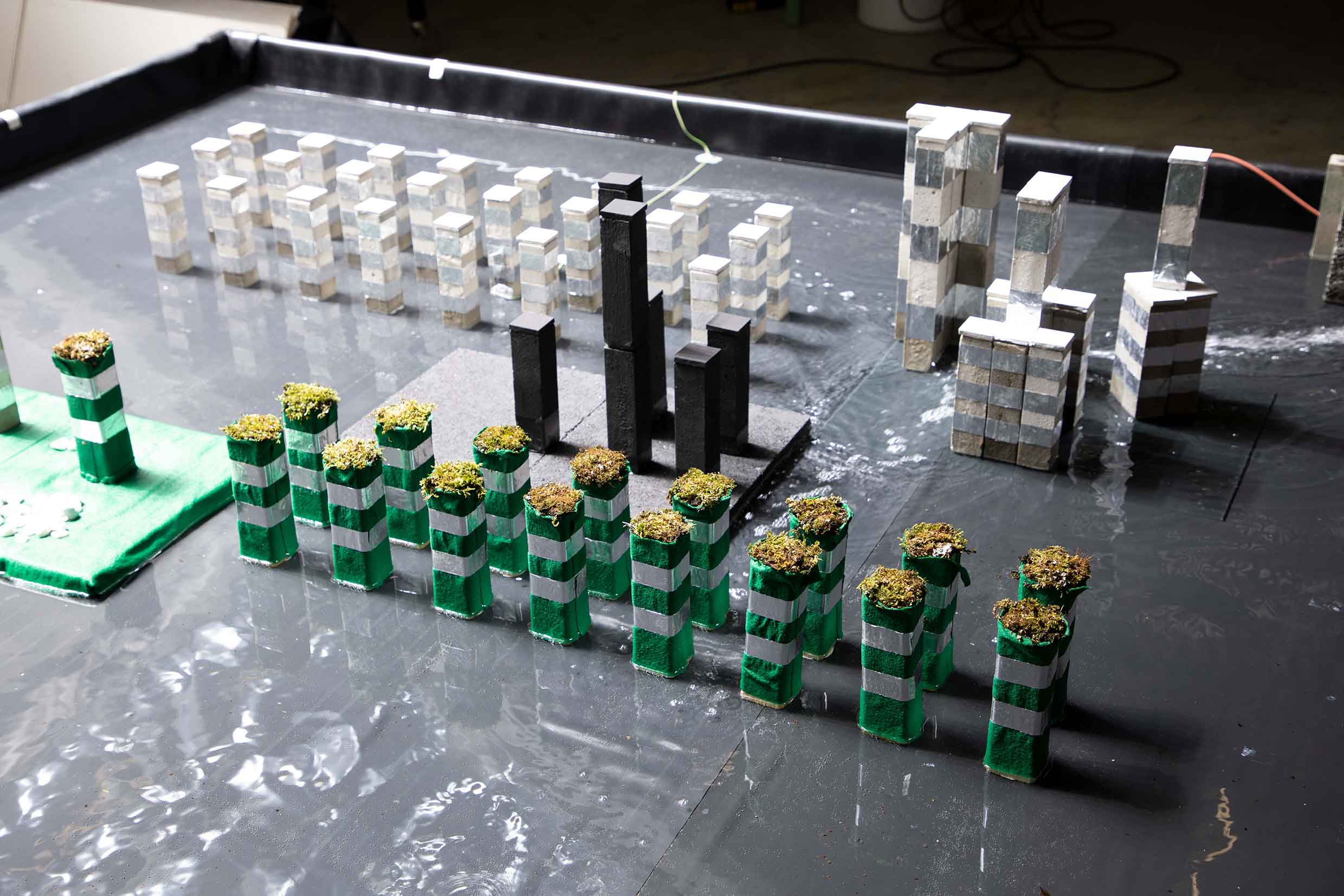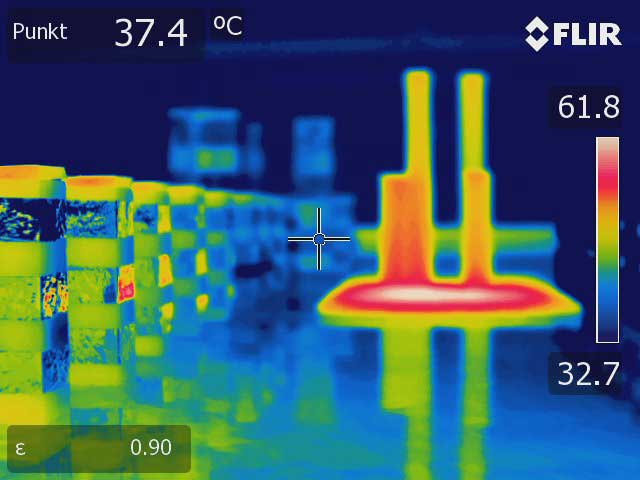»Primordial Cities Initiative« at STATE Studio Berlin
Fraunhofer Institute For Building Physics IBP Has Partnered With Experimental Philosopher Jonathon Keats On A Revolutionary Urban Planning Scheme for Extreme Climate Change. Preliminary City Designs To Be Revealed At STATE Studio In Berlin Next Month.
As climate scientists forecast large-scale human migration from coastal cities to escape the effects of sea level rise over the next century, a team of engineers led by experimental philosopher Jonathon Keats is developing a radical new approach to infrastructure based on Earth’s earliest life forms. These “stromatolite cities” may support long-term occupation of vulnerable metropolises including Shanghai and Manhattan, while simultaneously counteracting one of the key contributors to greenhouse gas emissions in the building sector: the widespread use of energy-intensive air conditioning to mitigate heat stress.
“Stromatolites are the fossil remains of microbial communities that thrived on our planet billions of years ago,” says Mr. Keats. “Many kinds of organisms lived together symbiotically. In a way you can think of them as the first cities.” Moreover, Mr. Keats explains, stromatolites had to contend with challenges that our urban centers are starting to confront. “The climate in the deep past was inhospitable to complex life forms, and we’re now heading toward conditions that may be nearly as harsh,” says Mr. Keats. “We should be asking ourselves how they flourished.”
One key factor, according to paleontologists, was their habitat. Stromatolites often lived in tidal environments, which naturally moderate temperature extremes. Their interactions with these niches were dynamic. Stromatolites grew in layers, combining organic matter with sediment. Lower layers were incrementally sacrificed, becoming part of the foundation as new levels of live matter were added.
In stromatolite cities, skyscrapers will be erected in an equivalent manner. “We’re designing new building archetypes that will allow for continuous layered construction,” says Mr. Keats, whose novel designs – including renderings and models – will be exhibited at STATE Studio in Berlin starting on 12 December. As the sea level rises, new stories will be built, increasing the highrises’ height. Inhabitants will move to higher floors, living above the tides.
Over the past year, the benefits of this urban planning strategy have been studied and validated by researchers at the Fraunhofer Institute for Building Physics IBP in Germany, Mr. Keats’ partner in the interdisciplinary Primordial Cities Initiative. “We’ve run computer simulations to analyze the thermal effects of heavy flooding in districts of Shanghai, Manhattan and Hamburg,” says Professor Gunnar Grün, deputy director of Fraunhofer IBP. “In each case, we applied climate models that projected sea level rise and seasonal temperatures in the years 2100 and 2300. Although the three cities are different in many ways, all were made significantly milder – more hospitable to humans – by the thermal inertia and evaporative cooling potential of water.”
At the STATE Studio exhibition, Mr. Keats’ innovative buildings will be presented together with results from Fraunhofer IBP’s experiments and an energy management plan that Mr. Keats has developed with Fraunhofer IBP engineers. “We’re especially excited about this plan, because it promises to make stromatolite cities carbon-neutral by eliminating the need for air conditioning and taking advantage of tidal energy for other requirements,” says Dr. Christian Rauch, director of STATE Studio and a consultant on the project. Tidal generators and gravitational batteries will be complemented by a new technology for temperature control that is currently undergoing patent review.
The Primordial Cities Initiative, which has already received enthusiastic responses from urban planners in Shanghai, will undergo further development and adaptation to additional urban environments following the STATE Studio showcase.
The Primordial Cities Initiative is directed by experimental philosopher Jonathon Keats in collaboration with the Fraunhofer Institute for Building Physics IBP (Stuttgart) and STATE Studio (Berlin). The project is part of the Fraunhofer Artist-in-Lab Residency Program, which promotes the convergence of knowledge cultures through an exchange in interdisciplinary projects. The project is developed in cooperation with the Communication Department of the Fraunhofer Headquarters and is supported by the Fraunhofer Network for Science, Art and Design.
More Information
- Fraunhofer Artist-in-Lab Residency Program (art-design.fraunhofer.de)
- Fraunhofer Network for Science, Art and Design (art-design.fraunhofer.de)
- STATE Studio Berlin
- Museum of Natural History Berlin
Last modified:


